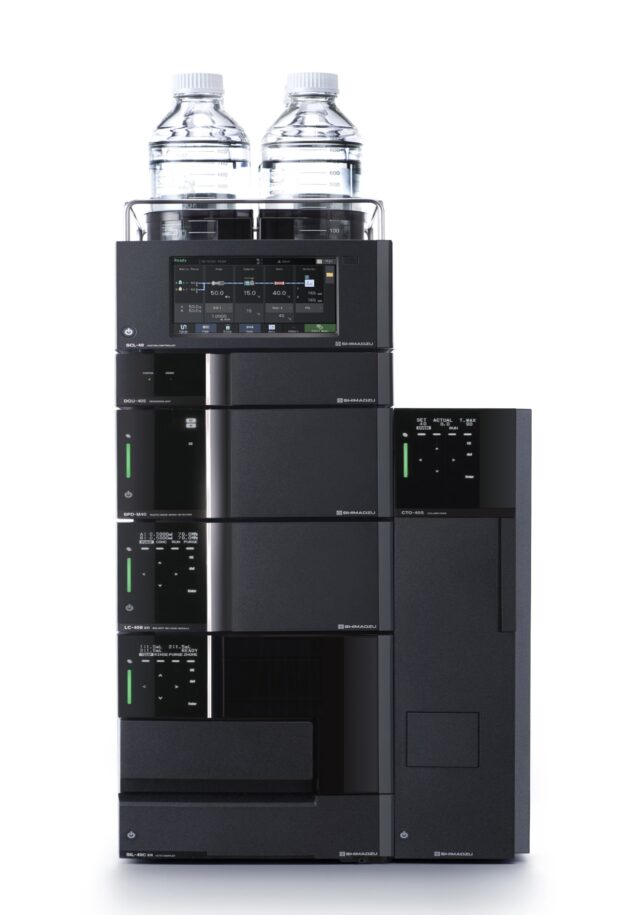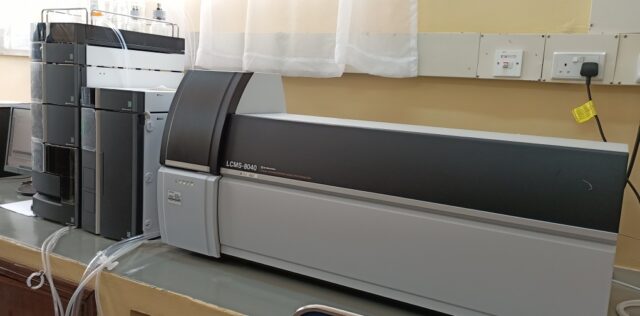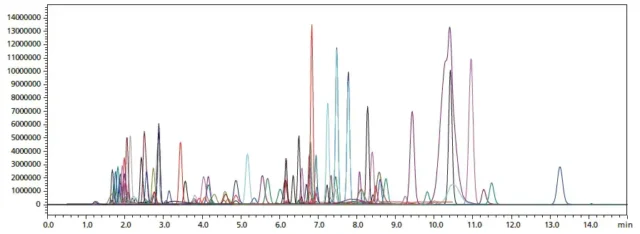 Liquid chromatography (LC) separates the components of a sample based on the differences in their affinity/retention strength during the stationary phase and mobile phase. Common LC techniques, namely reversed-phase, normal phase, and size exclusion chromatography. With technological advancements the LC has evolved to analyze smaller particle sizes and higher pressure that are more efficient, have higher speed, sensitivity, and resolution. This includes the high-performance liquid chromatography (HPLC) and the ultrahigh-performance liquid chromatography (UHPLC).
Liquid chromatography (LC) separates the components of a sample based on the differences in their affinity/retention strength during the stationary phase and mobile phase. Common LC techniques, namely reversed-phase, normal phase, and size exclusion chromatography. With technological advancements the LC has evolved to analyze smaller particle sizes and higher pressure that are more efficient, have higher speed, sensitivity, and resolution. This includes the high-performance liquid chromatography (HPLC) and the ultrahigh-performance liquid chromatography (UHPLC).
Upon separation by LC, the components can be detected using optical properties such as ultraviolet-visible (UV-VIS), fluorescence, refractive index, evaporative light scattering, or electrical conductivity based on the analytes’ properties. When the analyte passes through the detector, a change (e.g., increase or decrease) in the optical property will be observed and recorded.
Chromatograms obtained using these optical detectors primarily identify or qualify substances based on the retention time and quantitate substances based on the peak area and intensity. The LC chromatogram shows an example of a typical chromatogram obtained using these optical detectors. LC coupled with optical detection offers great quantitative accuracy for analytes that can be chromatographically resolved, where a detected peak comprises only a single component. However, achieving required resolution is challenging for complex samples where multiple components elute approximately at the same time. In contrast, mass spectrometry (MS) offers a highly sensitive detection technique that ionizes the sample components, separates the resulting ions in vacuum based on their mass-to-charge ratios (m/z), and measures the intensity of each ion. A mass spectrum plots the relative ion intensities against the m/z values, and a series of mass spectra are generated at each time point. This information indicates the concentration level of ions that have a given mass and is extremely valuable for the unique identification of molecules, also known as qualitative analysis. Moreover, MS provides added specificity and sensitivity, and the convenience of simultaneous multicomponent analysis.
When the LC is coupled with MS, the mass spectra obtained from these measurements provide molecular mass and structural information for eluted components, which supplement the qualitative information based on retention times obtained using other LC detectors. Therefore, LCMS combine the outstanding separation resolution of LC with the excellent qualitative capabilities of MS.

With its superior qualitative and quantitative capabilities and robustness, LCMS is commonly used to meet the rigorous demands of the analytical market and industries. LCMS is applied in many industries such as pharmaceuticals, biopharmaceuticals, forensic, industrial, food and environmental sector. For clinical research, the analysis of drugs, vitamins and minerals in whole blood, plasma, serum and urine is conducted routinely using LCMS. It is also applied in metabolomics, proteomics and genomics study. The use of LCMS in the biopharmaceutical discipline have enabled the bioanalysis and characterization of antibody drugs.




In the environmental field, LCMS is widely utilized for the qualitative and quantitative determination of known pollutants (e.g. pesticides, bacteria, pharmaceuticals and personal care products) and trace-level emerging contaminants. Food safety and development have also adopted the use of LCMS in their product quality control such as the quantitation of residual veterinary drugs, food additives and the composition analysis of supplements and organic foods. With high sensitivity, high detection selectivity and high qualitative capability, MS bring about the flexibility of simultaneous multi-component analysis, improved productivity, and efficiency to HPLC analyses in these applications.
Written By Steven Kuria – Sales Executive ESTEC Ltd
Published By Mitchelle Gacheri – Marketing Executive ESTEC Ltd

 Source
Source